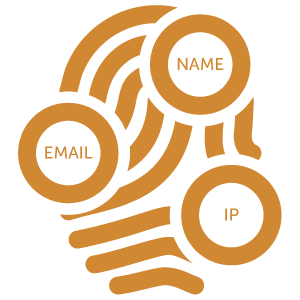 Many of us work with databases containing row after row of contact records. We tend to think of these databases as a whole, oftentimes referring to a contact database as a “list.” While you may care deeply about the database’s quality and health overall, have you ever considered its health on a more cellular level? Let’s dig into data quality at the record level and figure out what a great contact record really is.
Many of us work with databases containing row after row of contact records. We tend to think of these databases as a whole, oftentimes referring to a contact database as a “list.” While you may care deeply about the database’s quality and health overall, have you ever considered its health on a more cellular level? Let’s dig into data quality at the record level and figure out what a great contact record really is.
From a contact verification perspective, a great contact record contains five specific pieces of information. In all cases, this information must pass (or be corrected / flagged) several tests such as:
- Is it spelled correctly?
- Is it complete?
- Is it genuine?
- Is it current?
The information contained within a great contact record are:
- Name – Obviously, every contact record should have a name. However, do you have the contact’s full name? Is it real or is it bogus such as “John Hancock”? Is it vulgar? Is it the name of a celebrity? Is the name, as supplied, separated into individual data fields or is it a long string of text that’s difficult to work with? Name validation tools run various checks to weed out bogus contact information as well as parse names into their appropriate data fields such as: prefix, first name, middle name, last name, and suffix. In addition, name validation can suggest alternate spellings or related names.
- Address – Again, each contact record should have a valid shipping and/or billing address. USPS address validation standardizes and corrects addresses as well as provides you with additional insights such as whether the address is a post office box, an occupied residence, or an occupied business.
- Phone Number – Great contact records also include accurate phone numbers. However, it’s not always clear whether a supplied phone number is the contact’s home, business, or mobile phone. Reverse phone lookup and phone validation tools can be used to determine the validity of a given phone number, find out who it belongs to, identify the line type (such as landline, VOIP, or mobile phone), and more. Phone append tools are a type of contact verification that can find and append appropriate phone numbers for a contact record lacking this information.
- Email Address – Email addresses are also important for truly great contact records. However, it’s not uncommon for users to transpose letters or submit bogus email addresses in an attempt to keep spam at bay. Email verification can correct common domain misspellings and syntax errors as well as return detailed insights as to the address’s authenticity.
- IP Address – IP addresses provide geographic information related to a user’s Internet connection. This information is crucial in preventing fraud. For example, if an e-commerce customer claims to be in Los Angeles but the IP address reveals a Russian address, that’s a warning sign that the order could be fraudulent. IP address validation also identifies the use of public or anonymous proxy servers which are often used by criminals.
From a business perspective, a great contact record contains all of the same basic information that our contact verification software validates. After all, you’ve gathered that information for specific purposes. A great contact record is one that has also been recently validated by appropriate contact verification tools. For example, if you have a mailing list, a great contact record is one that contains the required information and has recently undergone USPS address validation.
Contact verification helps to ensure that your contact records are current, accurate, complete, and authentic — in other words, great!




